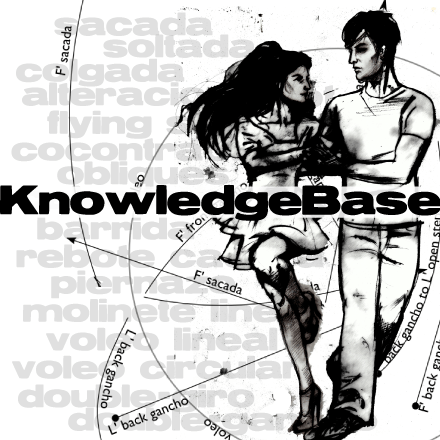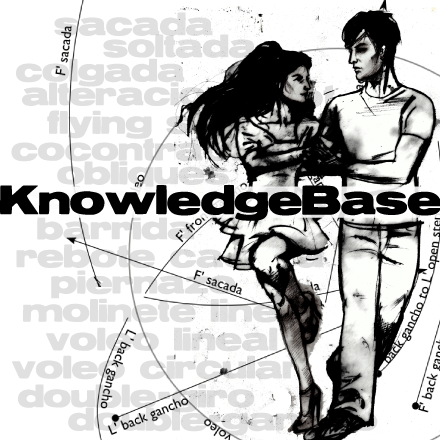To make our dance interesting and to be able to respond to diverse music, we need the capacity to change the dynamic, or quality of movement, of the step.
This is the Mark’s responsibility and prerogative as the creative in the dance. The Revel is always responsible for matching the dynamic. It’s especially noticeable in voleos and ganchos when a Revel has only one dynamic and does not match the Mark. There is a huge continuum of possibilities, and the variation of dynamic is what enables us to use the tango repertoire to dance on any music.
If the Revel feels moved to contribute a dynamic she must do so without damaging the arch of connection, and she should be mindful not to distract the Mark, make his work more difficult, or change the pathway on the dancefloor (which could endanger other dancers).
The most basic way to change dynamic is to change the speed of the step. We can accelerate (go fast) and decelerate.
 A second way to change dynamic is to change the shape of the step. The diagram shows different shapes of steps which create different experiences. All of these can be done at various speeds.
A second way to change dynamic is to change the shape of the step. The diagram shows different shapes of steps which create different experiences. All of these can be done at various speeds.
A third dimension of dynamic is the amount of power coming from the base leg when we push to start the transfer of weight. Is the step dramatic or gentle? We create extra power by intensifying the arc at the start of the step, using extra hip flexion and co-contraction.
A final way to change the dynamic is by giving a personality or character to your step, such as drunk, little girl, cat, melancholy, cowboy, excited, etc. Both marks and revels can introduce character into the dance.











